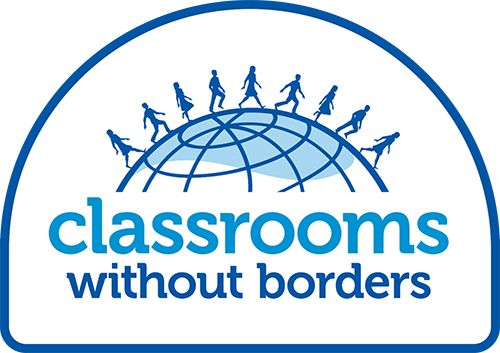The rest of our group landed this morning and we met them at Warsaw’s Jewish cemetery. We talked about how this cemetery is one of the happier Jewish historical sites, because many of those buried there died before the war. However, like every site in Poland, the war left its mark on the cemetery. We saw two mass graves where Jews were buried after dying or being murdered in the Warsaw ghetto. We also saw the grave of Adam Czerniakowa, the head of the Jewish council in Warsaw who committed suicide rather than give the Nazis a list of people to send to Treblinka. Walking around the cemetery, there were many graves written in Hebrew, but just as many in Polish. This is because, for many Polish Jews, being Polish was just as much a part of their identity as being Jewish.






After that, we went to a mall across the street to have lunch. As we were leaving, it started to rain. It was a nice escape from the 80 degree weather.
From there we headed to a building that had survived the war. It was the orphanage run by Janusz Korczak. It still operates as an orphanage today. Janusz Korczak was a doctor who wrote about children, and he ran his orphanage and school democratically. He had many opportunities to escape Poland, but instead decided to stay with his children. Even though he didn’t have to, he and his assistant Stefania Wilczyńska went to Treblinka to die with the orphans.

Next, we went to a church that was within the ghetto. You may be wondering, “why is there a church inside the ghetto?” It is there because the Germans believed Judaism was an ethnicity, not a religion. They believed if you had Jewish blood you were Jewish, even if you identified as Christian. Because of this, the ghetto had two churches for these “Jewish Christians.”
Then we headed to another one of the buildings that had survived the war, and talked a bit about Jewish life in pre-WW2 Poland. The building we saw had been an apartment building in a Jewish neighborhood. Unfortunately, it was under renovation so we couldn’t see much of it.
Next we went to the location that once held Poland’s Yiddish theatre. In Poland, Jews mainly spoke Yiddish. Because of this, there was a theatre where plays were put on in Yiddish for Yiddish speaking audiences. We spoke about Jewish cultural life before the war and about how language can help define a culture. After the war, the theatre continued to hold performances in Yiddish for both Jewish and non-Jewish audiences. The Yiddish theatre was operating until last year. It was torn down to build an office building that will hold a new Yiddish theatre.
From there we went to the only synagogue in Warsaw to survive the war. Before the Holocaust, there were 400 synagogues in Poland. The synagogue we saw was built in 1902 and was originally in the Jewish ghetto. When the ghetto shrunk, the synagogue was no longer inside. It was used as a warehouse during the war, and afterwards returned to being a synagogue. We met with the assistant to the Chief Rabbi of Poland and spoke about the unique identities of Polish Jews. Many of them do not know they’re Jewish, or don’t feel comfortable being open about it. This synagogue aims to make everyone feel welcome and give them a place to explore their Jewish identity.


When we left the synagogue, we headed straight back to the hotel, for some much needed rest before dinner.
We had our opening dinner at the hotel with the entire group. During dinner, we had a few speakers and special guests. First, Jonty Blackman introduced himself and spoke about his family. Next, a producer told us about a movie he made: “Warsaw: A City Divided”, which will be coming to Pittsburgh sometime next year. After hearing about that movie, a member of the Jewish community told us about how Warsaw is joining Pittsburgh and Karmiel in the Partnership2gether program as well as about her experience with the Jewish community in Poland. Lastly, Natalia introduced herself and spoke about some of the research she has done. Natalia is joining us on the trip and has devoted her life to studying the lives of Jews in Poland before, during, and after the war.
After dinner, an optional walking tour of the old city was offered. However, many of the students are still on Pittsburgh time, and just wanted to go to sleep. Hopefully everyone will be more awake tomorrow.

Photos by: Khalil Hauser, Kayla Campbell, Amira Jackson, Amy Spear, Josh Andy, Julie Schultz, Zeke Stroupe, Crista Good, Carole Bailey, and Rosann Argenti
Emma Stewart is a student at Winchester Thurston School.
